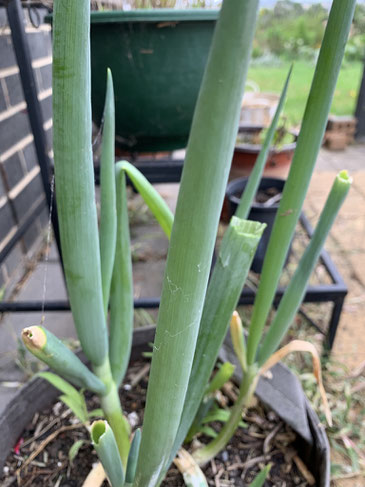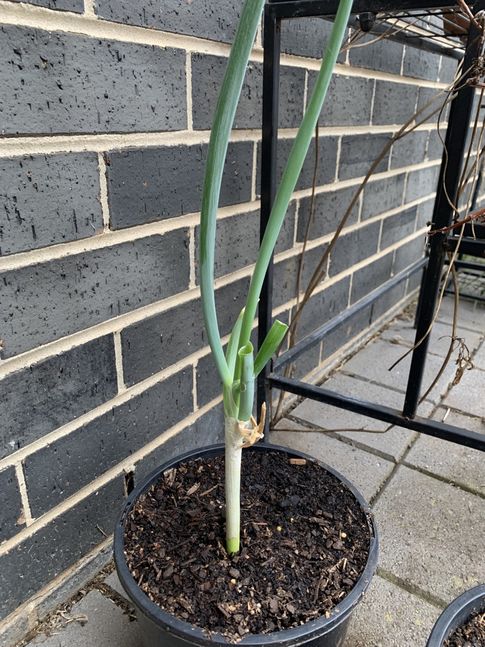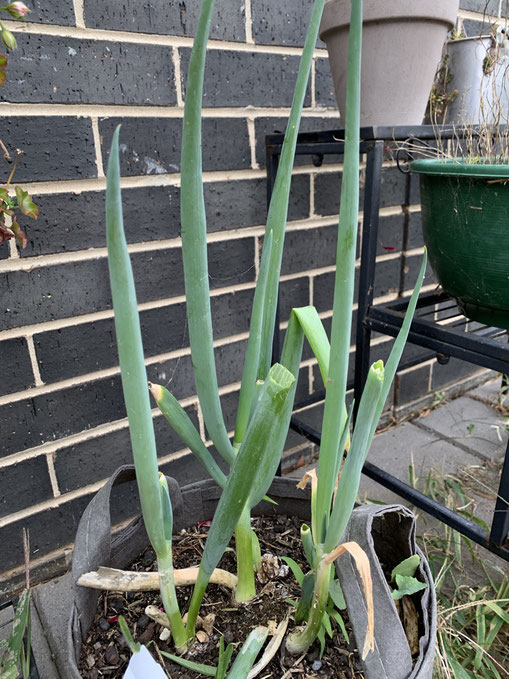Keeping flavours in the garden throughout the year can be a struggle, especially if you have a temperate climate such as ours. It can be 32 degrees (celsius) one day, and 19 degrees the next. This is why I always look for hardy perennials to take the place of common vegetables and herbs where I can.
A great place to find these unusual perennials are from growers that live close to you. Often market gardeners have wonderful perennial varieties on the go, if you can happen to find them and get chatting that is!
Onion is one of those flavours that’s handy to have available all year in the garden. If you have onions growing, whether it’s chives, walking onions, spring onions or big brown onions, you know they will certainly get used.

Why grow your own onions?
Onions that are grown en masse for supermarkets are sprayed with pesticides, but don't seem to take the residue on as badly as some other fruit and vegetables. So while eating fresh onions is best no matter where you get them, its much healthier for your gut to keep onion flavour growing in your own garden to add to your nightly dishes. You can check out the "dirty dozen" of fruit and vegetables here, as well as the "clean 15".
ALLIUM FISTULOSUM
Described to me initially as a Japanese Chive, Allium Fistulosum is a bunching onion or scallion that never forms a bulb. Instead it has lovely thick green hollow stems that can be used as spring onions, while also having a sweet white stalk that can be used instead of leek and onion.
The fact is that this perennial has many, many names, but the onion itself seems to have been in use for over 2,000 years in Asia. It’s called a Welsh onion (but does not hail from Wales, its from a time when “welsh” meant “foreign” or exotic), but in Australia it is widely known as a Negi (long) onion.
The onion flavour it produces is always sweet and fresh, never overpowering, so it can be added to soups, salads, stir fries and omelettes, just to name a few things.
I have heard this onion being described as the “hundred year onion”, as once you have these in a pot or the garden, you can easily have them forever. I have now had them in my garden for 8 years and never been without them as an edible option since obtaining the original plant.

So good for you...
Like other plants in the Allium family, this wonder vegetable contains many nutrients such as vitamin c, iron, vitamin B6, Magnesium and calcium.
Easy going and easy growing...
Once you have this in a pot or garden, you will find it propagates easily, either using its scapes or multiplying underground. I find it rarely dies off here in our climate, so I find I always have it available in pots on my kitchen patio, which is right outside the kitchen door.
While I have grown potato onions and spring onions widely at times, the Negi onion is the one that remains outside my kitchen door and never dies off. Happily this year, they self-propagated (perhaps from the east winds swirling around the place), so now I have three pots outside the kitchen door. Doing a bit of a read up, I found that if you hill up the onions they will produce more stalks to eat. A good tip and I will try this from now on.
So maybe its time for you to think about perennials that you can grow for food, it’s less work overall, but adds so much flavour to your plate.

